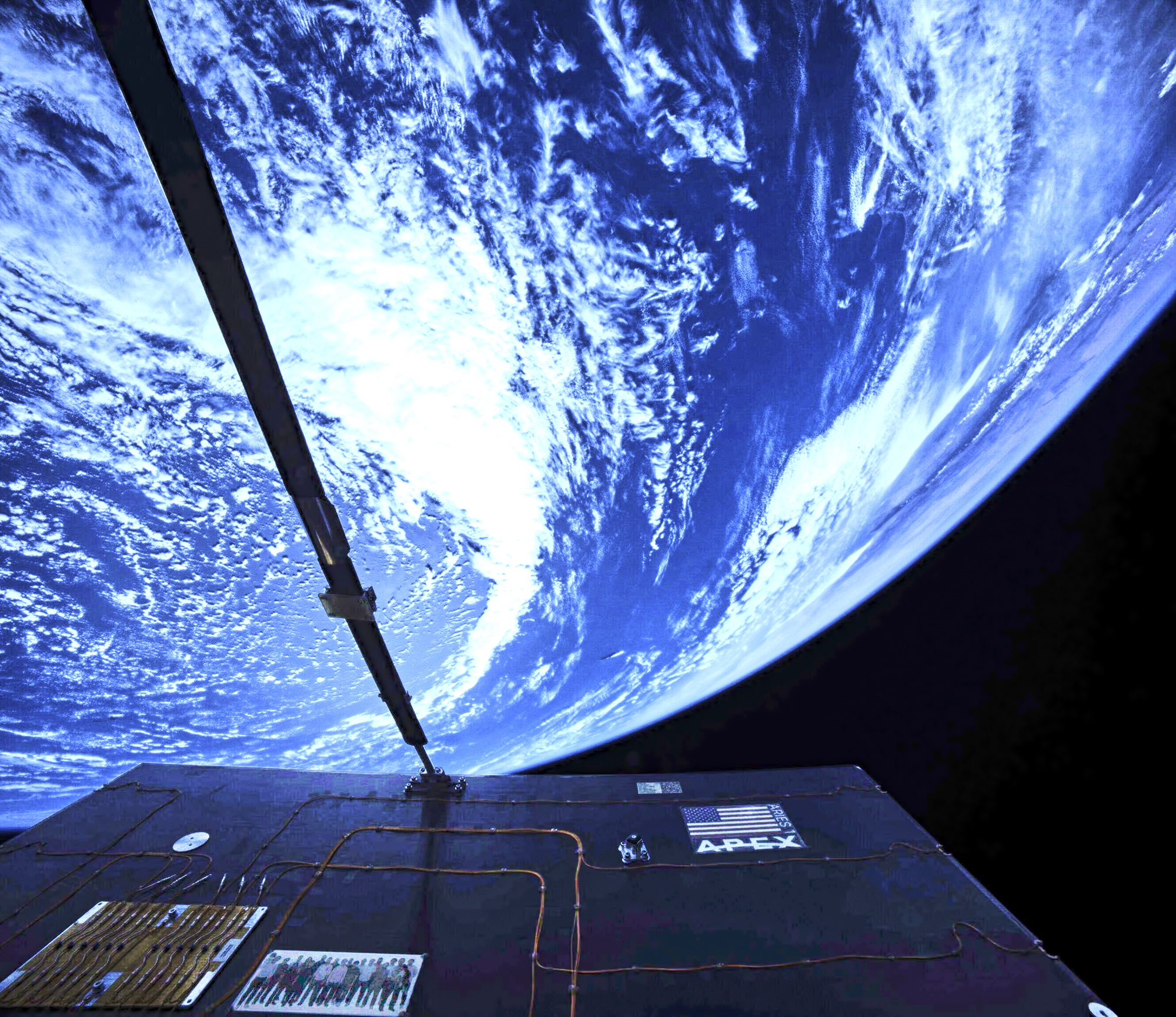WASHINGTON — Several companies that launched their first spacecraft on a rideshare mission earlier this month are reporting varying degrees of success, from full operations to an early end of testing.
Apex, a satellite manufacturer that launches its first Aries spacecraft on SpaceX’s Transporter-10 mission March 4, announced March 25 that the satellite has commissioned its first payload, a camera that took a “selfie” of the spacecraft with the Earth in the background.
Being able to take and transmit the image, the company said in a statement, demonstrated the end-to-end performance of the spacecraft, from power to communications. The company previously said it was able to make contact with the spacecraft shortly after its deployment and confirm key systems are working well.
“This selfie demonstrates that all our satellite’s subsystems are working well both individually and together,” Ian Cinnamon, chief executive of Apex, said in a statement. “Space is not easy, and I continue to be impressed by our world-class team for pulling this off on a record time frame.”
The Aries satellite is flying a mission called “Call to Adventure” carrying payloads for several unnamed customers. Cinnamon said in an interview shortly after launch that those customers included three “major defense primes,” among others, flying payloads that range from communications to edge computing to space domain awareness.
“Commissioning our first payload was a major milestone for our team, showing that we have successfully completed a full mission scope,” Max Benassi, chief technology officer of Apex, said in the statement. “We look forward to finishing bus-level commissioning before we help our customers achieve what they need from their payloads.”
Apex said it expected to turn over access to those payloads to its customers in the “coming days” after completing final commissioning of the spacecraft’s guidance, navigation and control system.
Apex is one of several companies that flew their first satellites on Transporter-10. Others have reported mixed success in commissioning their spacecraft after launch.
Sidus Space, which launched its first LizzieSat spacecraft on Transporter-10, said March 20 it had established two-way communication with the satellite. That came six days after the company said it received the first signals from the spacecraft, but didn’t indicate if that timeline was that the company planned for or took longer than expected.
The spacecraft, weighing about 125 kilograms, carries remote sensing and edge computing payloads. Sidus Space says it plans to launch two more LizzieSats by the end of the year to support a “data as a service” business line.
Atomos Space launched two spacecraft, called Quark-LTE and Gluon, on Transporter-10. The company launched the spacecraft to demonstrate technologies for its Quark orbital transfer vehicle, with Quark-LTE docking autonomously with and being refueled by Gluon.
Atomos said March 5 that it had received telemetry from both spacecraft indicating they were healthy, but found that the spacecraft were transmitting at a far lower rate than planned. The company has been working since then to improve communications and to detumble the spacecraft. In the company’s most recent update March 20, it said it was preparing to commission the spacecraft’s propulsion system that will be used to demonstrate proximity operations.
True Anomaly also flew its first two Jackal spacecraft on Transporter-10 to test rendezvous and proximity operations. In a March 21 statement, the company said it took time to identify its spacecraft from others on the mission, a challenge also faced by the Defense Department as it tracks deployments from rideshare missions that can, in some cases, feature more than 100 satellites.
“After deploying from the Falcon 9 rocket, we worked with other Transporter-10 riders to share location information and confirm the orbit state of both Jackals. It was inspiring to watch the space community come together to help us and other organizations sort and correlate tracks for the closely spaced group of vehicles,” the company said.
The spacecraft, though, did not appear to be functioning. “Though initial telemetry from Jackal 1 indicated the vehicle was in a nominal state, we’ve been unable to verify if either Jackal is currently functional,” the company stated, but did not elaborate on the issue. The company posted, but then deleted, details about the problems on social media.
“Our first flight test has progressed as far as possible and we do not anticipate meeting the remainder of the test objectives, including on-orbit rendezvous & proximity operation (RPO) demonstrations,” True Anomaly stated. The company said it is working on a second mission it plans to launch in the next year with hardware and software improvements.
Related
Read the original article here
